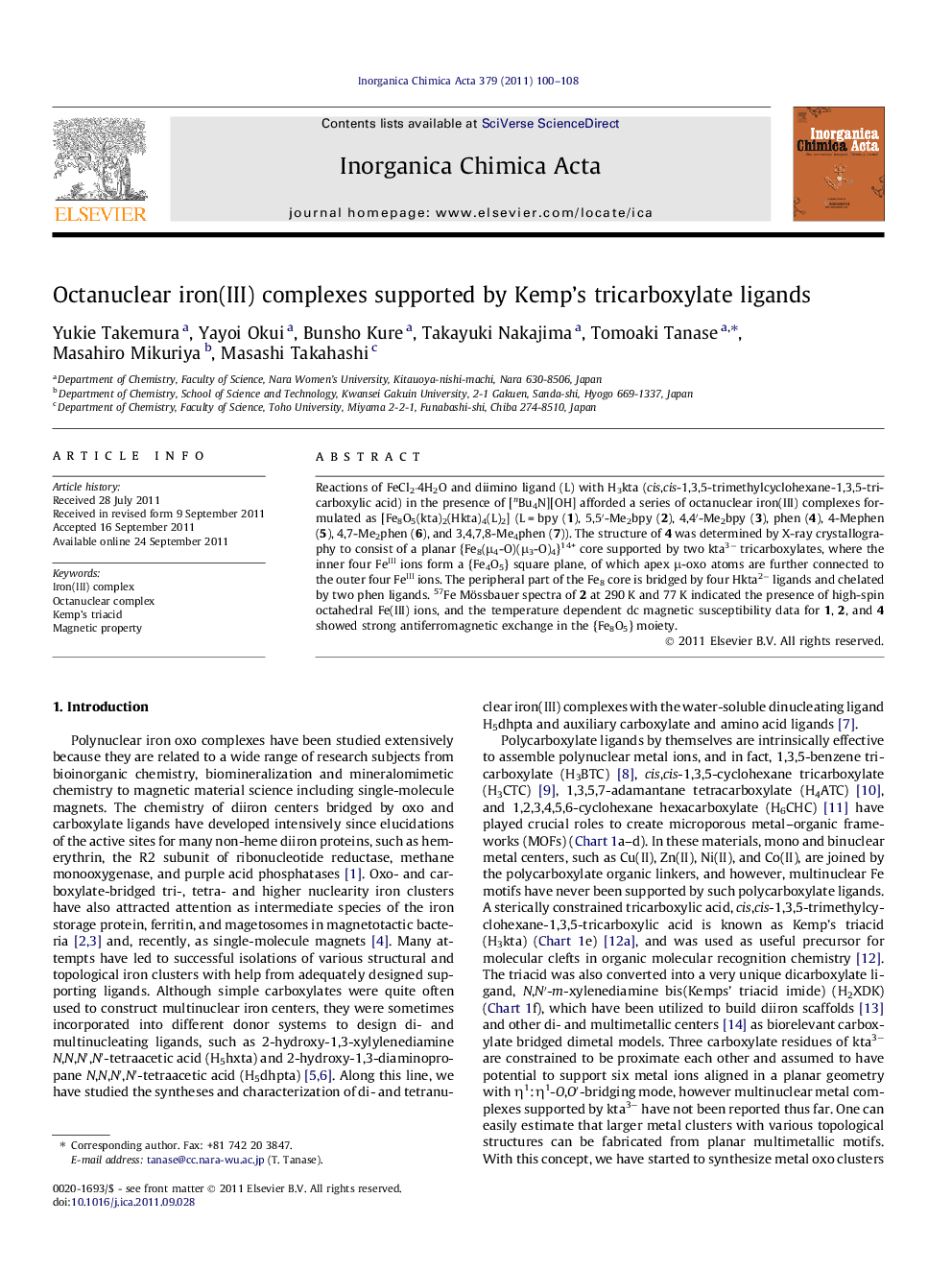| Article ID | Journal | Published Year | Pages | File Type |
|---|---|---|---|---|
| 1306161 | Inorganica Chimica Acta | 2011 | 9 Pages |
Reactions of FeCl2·4H2O and diimino ligand (L) with H3kta (cis,cis-1,3,5-trimethylcyclohexane-1,3,5-tricarboxylic acid) in the presence of [nBu4N][OH] afforded a series of octanuclear iron(III) complexes formulated as [Fe8O5(kta)2(Hkta)4(L)2] (L = bpy (1), 5,5′-Me2bpy (2), 4,4′-Me2bpy (3), phen (4), 4-Mephen (5), 4,7-Me2phen (6), and 3,4,7,8-Me4phen (7)). The structure of 4 was determined by X-ray crystallography to consist of a planar {Fe8(μ4-O)(μ3-O)4}14+ core supported by two kta3− tricarboxylates, where the inner four FeIII ions form a {Fe4O5} square plane, of which apex μ-oxo atoms are further connected to the outer four FeIII ions. The peripheral part of the Fe8 core is bridged by four Hkta2− ligands and chelated by two phen ligands. 57Fe Mössbauer spectra of 2 at 290 K and 77 K indicated the presence of high-spin octahedral Fe(III) ions, and the temperature dependent dc magnetic susceptibility data for 1, 2, and 4 showed strong antiferromagnetic exchange in the {Fe8O5} moiety.
Graphical abstractA series of octanuclear iron(III) complexes [Fe8O5(kta)2(Hkta)4(L)2] (L = bpy (1), 5,5′-Me2bpy (2), 4,4′-Me2bpy (3), phen (4), 4-Mephen (5), 4,7-Me2phen (6), and 3,4,7,8-Me4phen (7)), were prepared by utilizing Kemp’ tricarboxylate ligand, which involve a planar {Fe8(μ4–O)(μ3–O)4} structure.Figure optionsDownload full-size imageDownload as PowerPoint slideHighlights► Novel octairon(III) complexes were synthesized by using Kemp’s tricarboxylate ligands. ► The tricarboxylate ligand is suitable for supporting {Fe6O5} planar motif. ► Antiferromagnetic interactions are observed in the octanuclear Fe(III) complexes.
